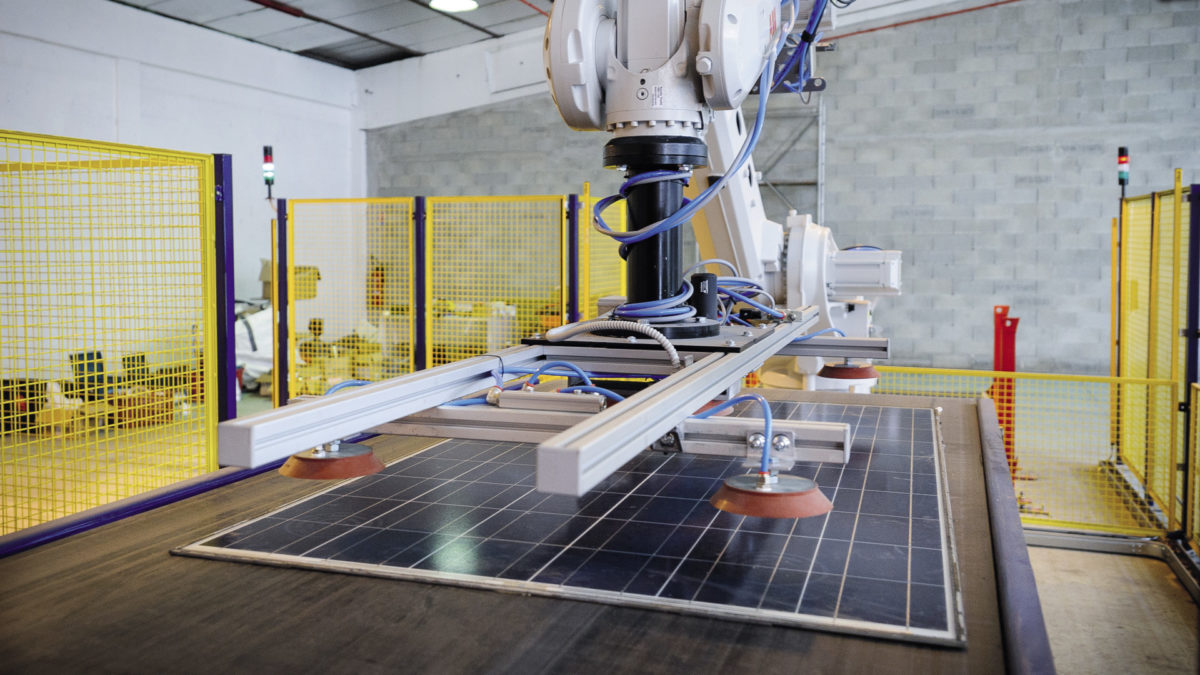From pv magazine Global
Scientists led by the Public University of Navarra in Spain have conducted a detailed life cycle analysis of solar PV technologies, comparing their impacts in various categories to those of electricity generated by other renewables technologies, as well as fossil fuels or nuclear.
In terms of CO2 and equivalent emissions, the study finds that solar’s impact today is much lower than all coal and gas generation (including with carbon capture), slightly lower than wind and slightly above nuclear. And while the impact level of the latter two is expected to remain at a similar level through to 2050, the study notes much more opportunity for solar to reduce its emissions in this timeframe.
The study, published in Progress in Photovoltaics, finds that land use is the only category where solar can have a comparable to that of fossil fuels, although solar overall would still require less land and have much lower long-term impacts on that land. Improvements to rooftop and otherwise integrated PV generation, as well approaches such as agrivoltaics, are set to improve this in the coming years.
The study still notes, however, that competition for land with food production, as well as public acceptance, should be carefully considered in the planning of new, large-scale PV installations.
Solar vs. solar comparison
The study also examined different solar technologies including crystalline silicon, cadmium telluride and CIGS thin-film, noting that silicon comes with the highest emissions, but others have larger concerns on availability of materials such as indium and tellurium. Silicon PV will have to contend with the availability of silver, but since alternatives to this material are already on offer commercially, the study does not expect this to have a major impact.
The authors also sought to take perovskite solar cells into account, as an emerging PV technology likely to see large-scale production well before 2050. They note that a proper life-cycle assessment for this technology is difficult to conduct, since it is far from clear the exact pathway and material construction it will take. But the presence of lead mean it will likely have a raised impact on human health categories, while the ease of processing would give it potential for very low emissions and environmental impacts.
The study’s other key conclusions are that the concentration of almost all PV materials manufacturing in China could present a further challenge to solar sustainability in the near future, and recommends both collaboration and the establishment of manufacturing in other regions.
And finally the authors note that recycling of PV products is still a major question mark hanging over the industry, and that much work is still needed both to develop new processes to recover more materials from end-of-life products, and to implement these at scale.
“More facilities for dismantling modules are required; and then, either in situ or in other specialized sites to which the dismantled parts could be sent for further treatment, facilities to increase element recovery and specially glass recycling will have to be built,” the paper concludes. “A logistical approach at regional level (e.g., European scale) should also be considered for the end of life of PV modules, with transport to recycling sites being a substantial part of future emissions associated to the PV systems’ full life cycle.”
This content is protected by copyright and may not be reused. If you want to cooperate with us and would like to reuse some of our content, please contact: editors@pv-magazine.com.









By submitting this form you agree to pv magazine using your data for the purposes of publishing your comment.
Your personal data will only be disclosed or otherwise transmitted to third parties for the purposes of spam filtering or if this is necessary for technical maintenance of the website. Any other transfer to third parties will not take place unless this is justified on the basis of applicable data protection regulations or if pv magazine is legally obliged to do so.
You may revoke this consent at any time with effect for the future, in which case your personal data will be deleted immediately. Otherwise, your data will be deleted if pv magazine has processed your request or the purpose of data storage is fulfilled.
Further information on data privacy can be found in our Data Protection Policy.